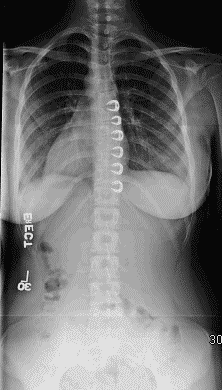-
What is Vertebral Body Stapling? How is it different from Vertebral Body
Tethers? In a previous blog the surgical
technique of Vertebral Body Tethering was presented. This technique places a compressive force
over the convex side of the spine (slowing down growth), to permit the concave
side of the spine to relatively grow more and create a straighter spine. Prior to the introduction of the Vertebral
Body Tether, which uses screws placed into the vertebral body, modulating
growth of the concave and convex side of the spine was accomplished with
staples. These staples were also placed
anteriorly, but instead of being placed in the middle of the vertebral body
they were placed across the disc spaces between each vertebral body.
-
Is VBS a new procedure? This surgical technique
was first reported in the 1950s but, due to the lack of an adequate implant,
the technique did not work as designed.
It wasn’t until the 2000s that an appropriate implant was identified,
and this technique began to show promise.
The staples used at that time, and currently, are made of Nitinol which
is a memory-shape alloy. When the staples
are placed in an ice bath, the tines of the staples can be straightened. After placement across the disc space the
staple warms up to body temperature and the tines curve back inward. -
What is the purpose of VBS? To halt or improve scoliosis in the
skeletally immature patient. -
What research has been done on VBS? There have been animal studies and clinical studies
over the last 15 years. -
Are there any potential complications of VBS? As
with any surgical procedure there can be complications related to the surgical
procedure or the patient’s underlying medical condition. The potential complications includes, but is
not limited to:-
Anesthetic (anaphylaxis, airway, etc…)
-
Pneumothorax
-
Excessive bleeding
-
For thoracic stapling: Injury to the lung,
heart, great vessels, thoracic duct, etc… -
For lumbar stapling: injury to the great
vessels, ureter, psoas dysfunction, etc… -
Painful postoperative surgical scar
-
Staple dislodgement
-
Staple breakage
-
Failure to control the scoliosis
-
Need for definitive spinal fusion
-

